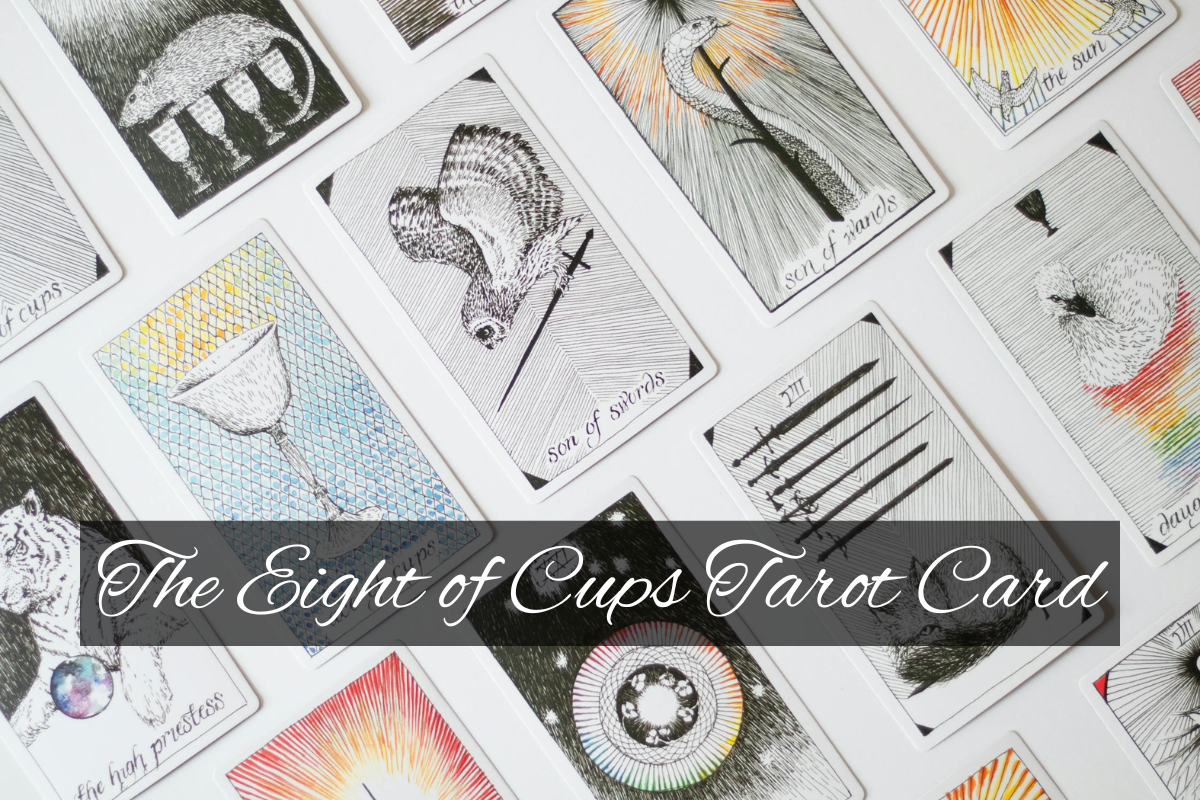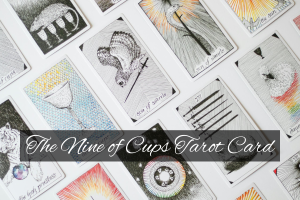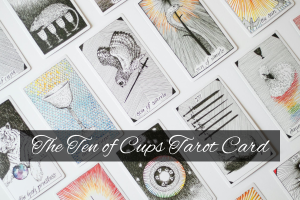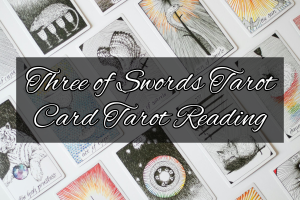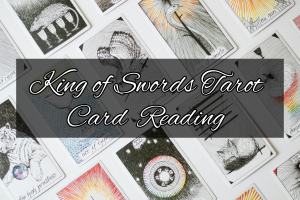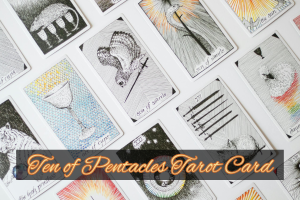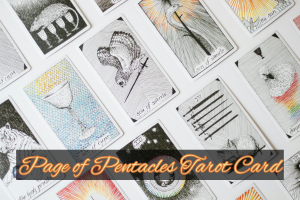The Tarot deck, with its 78 cards forming a rich mosaic of human experience, offers a timeless framework for understanding our emotions, choices, and spiritual journeys. Within the Minor Arcana, the Eight of Cups emerges as a deeply introspective and transformative card, steeped in themes of letting go, seeking meaning, and embracing change. As part of the suit of Cups—tied to water, emotions, intuition, and relationships—this card invites us to walk away from what no longer serves us in pursuit of a higher calling.
In this article, we will undertake a comprehensive journey through the Eight of Cups, tracing its historical roots, unpacking its evocative symbolism, analyzing its layered meanings, and reflecting on its role in contemporary Tarot practice. By the end, you’ll gain a profound understanding of this card’s quiet power and its significance in navigating life’s pivotal transitions.
Historical Context of the Tarot and the Suit of Cups
To fully appreciate the Eight of Cups, we must first situate it within the broader history of the Tarot. The Tarot originated in 14th- and 15th-century Europe as a card game, notably in Italy with decks like the Visconti-Sforza. Initially a form of entertainment, it evolved into a divinatory tool by the 18th century, propelled by occultists like Antoine Court de Gébelin and Jean-Baptiste Alliette (Etteilla), who infused it with esoteric depth and symbolic resonance.
The Minor Arcana’s four suits mirror traditional playing cards, with Cups corresponding to Hearts. Governed by the element of water, the Cups suit embodies emotions, intuition, and relational dynamics. Historically, cups or chalices have symbolized emotional abundance, spiritual nourishment, and the vessels of the soul—evoking the Holy Grail in Christian mythology or the cauldrons of Celtic lore. The numbered cards within the suit trace an emotional arc, and the Eights often signify movement, power, or a shift after the complexity of the Sevens.
The Eight of Cups inherits this legacy as a card of emotional transition, capturing the courage to leave behind the familiar for the unknown—a theme that resonates through its imagery and interpretations.
Symbolism of the Eight of Cups in the Rider-Waite Deck
The Rider-Waite Tarot deck, illustrated by Pamela Colman Smith under Arthur Edward Waite’s direction and published in 1909, provides the most iconic depiction of the Eight of Cups. Its haunting imagery serves as a foundation for understanding the card’s meaning.
In this portrayal, a cloaked figure walks away from eight golden chalices, neatly stacked in two rows of four and three with a gap. The figure carries a staff, suggesting a journey, and moves toward rugged mountains under a moonlit sky. A river flows nearby, winding through the landscape, while the night setting casts a somber, reflective tone over the scene.
The symbolism is poignant and layered:
- The Cloaked Figure: Dressed in red and black, the figure embodies resolve and introspection. Their departure signifies a conscious choice to abandon what once held value.
- The Eight Chalices: Stacked yet left behind, these cups represent emotional investments—relationships, dreams, or comforts—that no longer fulfill. The gap hints at something missing or incomplete.
- The Staff: A symbol of support and determination, it underscores the figure’s strength for the journey ahead.
- The Mountains: Towering and distant, they evoke a higher purpose, spiritual quest, or challenge to be faced.
- The River: Tied to the Cups suit, it reflects the emotional undercurrent guiding the departure, flowing toward the unknown.
- The Moon: Illuminating the night, it suggests intuition, mystery, or the subconscious driving this shift.
Together, these elements frame the Eight of Cups as a card of release, transition, and the pursuit of deeper meaning. It’s a solitary scene that speaks of both loss and liberation.
General Meaning of the Eight of Cups
At its essence, the Eight of Cups embodies the act of walking away—a moment where the heart recognizes that staying is more painful than leaving. It often appears when the seeker is ready to let go of something familiar, whether a relationship, a job, or an outdated version of themselves, to seek something more aligned with their soul. When this card surfaces in a reading, it signals a time of emotional courage—a call to release what’s stagnant and step into the uncertain.
In its most empowering light, the Eight of Cups celebrates self-awareness, resilience, and the quest for authenticity. It’s the decision to end a toxic dynamic, abandon a draining career, or pursue a long-buried dream. Yet, it also carries a shadow: the sorrow of departure, the fear of the unknown, or the risk of regret. The card challenges us to trust our intuition and embrace change as a path to growth.
Upright vs. Reversed Interpretations
The orientation of the Eight of Cups alters its message, offering distinct perspectives in upright and reversed positions.
Upright Eight of Cups
When upright, the Eight of Cups emphasizes departure and the search for meaning. Its key meanings include:
- Letting Go: Abandoning what no longer serves—relationships, habits, or beliefs.
- Transition: Moving toward an uncertain but necessary future.
- Quest: Seeking deeper fulfillment or spiritual truth.
- Emotional Fatigue: A weariness that prompts change.
In a reading, the upright Eight of Cups might suggest leaving a stagnant marriage, quitting a soul-crushing job, or embarking on a personal retreat. It’s a card of “enough”—urging the seeker to prioritize their inner voice.
Reversed Eight of Cups
Reversed, the Eight of Cups signals hesitation or a return. Possible interpretations include:
- Reluctance: Fear of leaving or clinging to the familiar.
- Return: Revisiting what was left behind, for better or worse.
- Stagnation: Staying in a situation despite knowing it’s unfulfilling.
- Clarity: Realizing the journey isn’t needed—or that it’s complete.
The reversed card can indicate a struggle to let go or, conversely, a homecoming after wandering. It’s a pivot between staying and going.
The Eight of Cups in Different Reading Contexts
The Eight of Cups adapts its meaning to the question or spread, providing tailored insights. Here’s how it might manifest:
- Love and Relationships: Upright, it’s walking away from a failing romance. Reversed, it suggests fear of ending it or a tentative reconciliation.
- Career: Upright, it indicates leaving a job for something truer. Reversed, it might mean staying out of inertia.
- Personal Growth: Upright, it’s shedding old identities. Reversed, it’s resisting transformation.
- Spirituality: Upright, it reflects a pilgrimage for truth. Reversed, it signals doubt in the quest.
In a three-card spread, the Eight of Cups in the “present” position might highlight a current departure, while in the “future” position, it could predict a necessary shift ahead.
The Eight of Cups in Combination with Other Cards
The Eight of Cups interacts with surrounding cards to enrich the narrative. Here are some pairings:
- With The Hermit: A solitary quest for wisdom.
- With The Moon: Intuition guiding a mysterious departure.
- With the Ten of Cups: Leaving false harmony for true fulfillment.
- With The Tower: A sudden exit from a crumbling situation.
- With The Star: Hope lighting the path after letting go.
These combinations position the Eight of Cups as a threshold, amplifying themes of release or renewal.
Psychological and Archetypal Perspectives
Psychologically, the Eight of Cups aligns with the concept of individuation—Carl Jung’s process of becoming one’s true self by shedding external expectations. It might represent the ego’s surrender to the soul’s call, moving beyond comfort into growth. It’s a card of the psyche in transition, balancing loss with liberation.
Archetypally, the Eight of Cups evokes the “Wanderer” or “Pilgrim”—seen in figures like Odysseus leaving Ithaca or the Buddha renouncing his palace. It’s the hero’s journey at its midpoint, the departure from the known world into the wilderness of the self.
The Eight of Cups in Modern Tarot Practice
In contemporary Tarot, the Eight of Cups resonates with modern struggles—leaving toxic environments, pursuing passion over security, or seeking meaning in a materialistic age. Practitioners often tie it to mental health, self-discovery, and the courage to redefine one’s life.
Modern decks reinterpret it—like the Wild Unknown’s lone bird flying from cups—yet its essence of departure endures. It’s a staple in discussions of empowerment, appearing in wellness blogs and Tarot circles as a symbol of choosing oneself.
Practical Applications: Engaging with the Eight of Cups
For those drawn to the Eight of Cups, it offers practical ways to work with its energy:
- Meditation: Visualize walking away from the cups toward the mountains.
- Journaling: Write about what you’re ready to leave and why.
- Ritual: Stack eight objects, then walk away, symbolizing release.
- Affirmation: “I release what holds me back and trust my path.”
In readings, ask: “What am I ready to let go of?” or “Where is my soul calling me?” The card becomes a guide through transition.
Cultural and Artistic Influence
The Eight of Cups inspires art and narrative—from paintings of solitary travelers to stories of quests for meaning. Its imagery fuels poetry about leaving home and songs of quiet resolve, marking it as a cultural emblem of the soul’s journey.
Conclusion: The Silent Strength of the Eight of Cups
The Eight of Cups is a quiet, resolute call—to turn from the familiar, to seek the unseen, to trust the heart’s compass. Whether it signals departure, quest, or the courage to change, it reminds us that letting go is an act of faith. Its symbolism, rooted in tradition and reframed for today, speaks to our universal need for authenticity.
To draw the Eight of Cups is to stand at the river’s edge, staff in hand, mountains ahead. The path is yours—and in that choice lies its profound grace.
